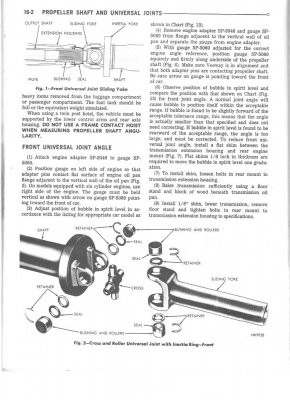Not saying you are wrong, but if a shaft is balanced and checked for runout on each end, why would it matter which end was where?
My Dana used a shaft with a weight, so it could only go one way, but the shaft for the 8 3/4" axle had the narrow section forward, and I didn't have any vibration.
When a shaft is built it is balanced complete and the slip yoke is part of the shaft, when you remove the slip yoke and even put it back on the same end and index the yoke 180 from it's original index to the shaft it is no longer balanced.
Take the slip and put it at the WRONG end of the shaft and it is no longer balanced.
Just because you didn't feel it doesn't mean it wasn't having an issue, I had a customer come in just yesterday, his carrier had no bearing hubs, the carrier was only being held in place by the axles, all he heard for the past few months was a bearing noise...
Imagine a rear diff that as little as .003 out of adjustment is all you need for everything to perfect or noisy, is now floating around on the axle and has 1.000" back and fourth and all that was heard was a bearing noise....
I don't believe him, but some people never notice it/things, like EVERY limo i get in i always wind up handing them a card and say have your boss call me about that vibration.
No one else in the car heard it or felt it, even the driver, but i did.
The old detroit inertia ring shaft was used in some cars thruout the years, that is not a balanced weight though, the shaft still needs to be balanced.
Changing joints can upset the balance in a shaft, dropping a shaft can upset the balance, people laugh at that but it is a fact, dropping a shaft very likely will upset the balancing and that is the single most reason i do not get involved with shipping anything.
Some cars and trucks can hide vibrations better than others, you not feeling it doesn't mean it's not happening.
.



















